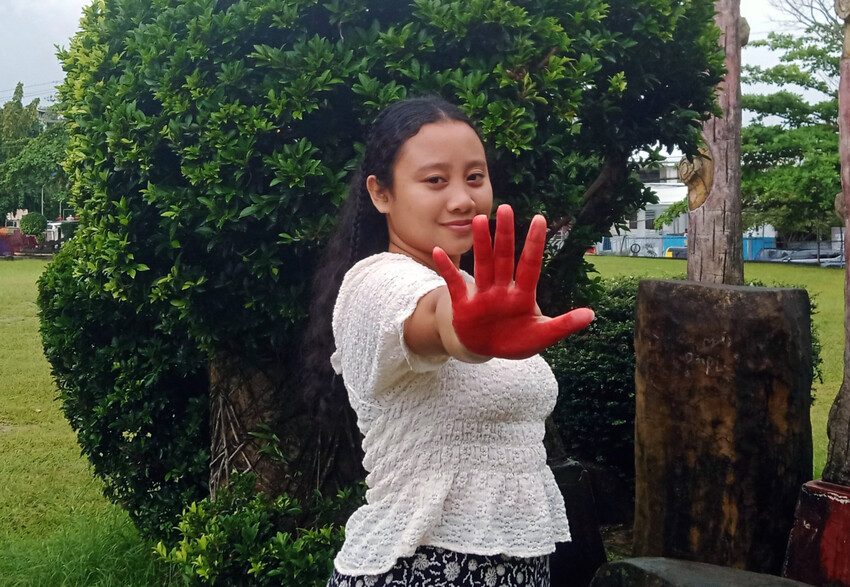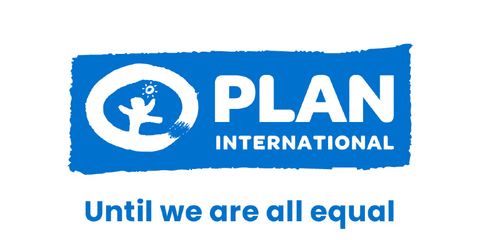Released but not reintegrated
The struggle of children associated with armed groups in the Central African Republic
12 February 2025It is essential that governments and all actors in conflict-affected regions condemn all grave violations against children in conflict, including recruitment and use by armed forces and armed groups, writes Plan International Child Protection Advisor Sandra Maignant.

#Hawa*, 17, from Kaga Bandoro in the Central African Republic was recruited by an armed group in 2021. She was considered the wife of the commander and felt it was an honor. She was protected and she had a few privileges. She was the leader of the other “wives” in the camp, and she oversaw the day-to-day business of the group.
These responsibilities made her feel respected. However, she also had to carry, clean and repair weapons, transport dead bodies, clean ropes used for torture, and at times collected money from shop owners.
After a while, she decided to leave the armed group and negotiated her exit with her “husband”. When asked what the main obstacles to her release was, she replied “the fact that the armed group provided toiletries and means to manage my menstruation.” Hawa knew that upon her return, her parents could not afford them. She is also likely to face stigmatisation in her community.
A decade of conflict
Central African Republic has been severely affected by a decade of conflict. Access to education is limited due to lack of teachers, insecurity, and damaged school buildings. Access to markets and food is disturbed due to tensions, and income generating activities expose people to random taxes by armed groups. There is also the serious issue of children being recruited into armed groups through the threat of violence, or the promise of money and support.
Since the conflict started in 2013, at least 17,038 children have been recruited and used by armed groups. In 2024, UNICEF verified 773 children had been released and recruitment is slowing down but the exit and reintegration of children and young people, like Hawa, into their communities and families remains a challenge.
- How can children fully exit an armed group when their commanders expect a share of any support received?
- How can they learn when schools are still occupied by armed forces and teachers don’t have the skills and resources to deliver quality education?
- How can they compensate for the loss of income when there is no food on the table and no job opportunities?
- How can they feel safe in their communities when they have experienced traumatic events and fear reprisals from their neighbours?
These are some of questions child protection actors like Plan International are trying to solve. Hawa’s situation illustrates the difficult situation these children, particularly girls, face.
Collaboration across sectors
The role of child protection actors with teams of social workers, community mobilisers, and counsellors is to prevent child recruitment, and support children’s’ exit and reintegration.
A child who has come out of an armed group needs support through food, hygiene products, access to education, mental health support, and a safe environment at home where they feel supported, understood, and welcome. And the child protection sector cannot do it all alone.
We must work together with teachers, schools, nurses, doctors, psychologists and economists; to help these children feel they belong to their community and there is a place for them.
To address this issue, Plan International and UNICEF organised a workshop in Bangui in January 2025 to bring together education, food security, livelihood and child protection actors to find solutions. Plan International and War Child are the Co-Chairs of the Global Children Associated with Armed Forces and Armed Groups (CAAFAG) Taskforce, leading efforts in the humanitarian community to better protect and support these children.
Children never start conflict but suffer most
Thousands of children are recruited and used in armed conflicts across the world. Between 2005 and 2022, more than 105,000 children were reported as recruited and used by parties to conflict, although the actual number of cases is believed to be much higher.
These children suffer serious exploitation. Children are used as fighters, scouts, cooks, porters, guards, messengers and more. Many, especially girls, are also subjected to gender-based violence.
Children become part of an armed force or group for various reasons. Some are abducted, threatened, coerced or manipulated. Others are driven by poverty, compelled to generate income for their families. No matter their involvement, the recruitment and use of children by armed forces and groups is a grave violation of child rights and international humanitarian law.
It is essential that governments and all actors in conflict-affected regions condemn and end all grave violations against children in conflict, including the recruitment and use by armed forces and armed groups of all children under 18, and consider them as victims of recruitment, not perpetrators.
This is why Plan International is campaigning to #UniteForPeace and to stand in solidarity with children living in conflict around the world in the various ways this is experienced.
Read more about the experiences of girls and boys living in conflict zones around the world in our flagship research ‘Still We Dream: Girls and young people living through conflict’.
*Name changed to protect identity.
